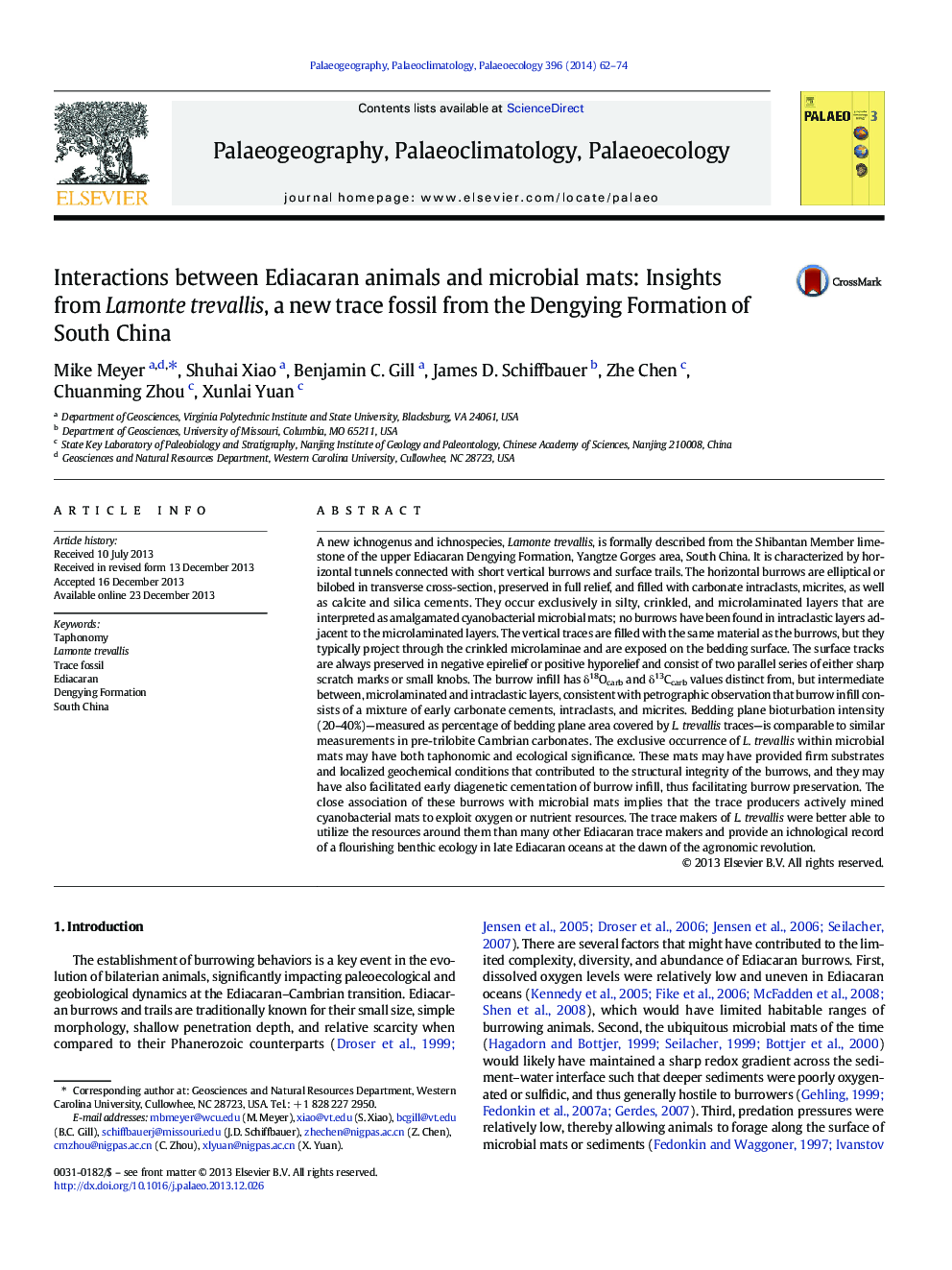| کد مقاله | کد نشریه | سال انتشار | مقاله انگلیسی | نسخه تمام متن |
|---|---|---|---|---|
| 4466407 | 1622194 | 2014 | 13 صفحه PDF | دانلود رایگان |

• Lamonte trevallis is described from the Ediacaran Dengying Formation, S. China.
• L. trevallis occurs exclusively within remnants of microbial mats.
• Bedding plane bioturbation intensity is comparable to early Cambrian carbonates.
• Burrowers may have actively exploited oxygen and nutrient resources.
• L. trevallis provides evidence of a flourishing benthic community in the Ediacaran.
A new ichnogenus and ichnospecies, Lamonte trevallis, is formally described from the Shibantan Member limestone of the upper Ediacaran Dengying Formation, Yangtze Gorges area, South China. It is characterized by horizontal tunnels connected with short vertical burrows and surface trails. The horizontal burrows are elliptical or bilobed in transverse cross-section, preserved in full relief, and filled with carbonate intraclasts, micrites, as well as calcite and silica cements. They occur exclusively in silty, crinkled, and microlaminated layers that are interpreted as amalgamated cyanobacterial microbial mats; no burrows have been found in intraclastic layers adjacent to the microlaminated layers. The vertical traces are filled with the same material as the burrows, but they typically project through the crinkled microlaminae and are exposed on the bedding surface. The surface tracks are always preserved in negative epirelief or positive hyporelief and consist of two parallel series of either sharp scratch marks or small knobs. The burrow infill has δ18Ocarb and δ13Ccarb values distinct from, but intermediate between, microlaminated and intraclastic layers, consistent with petrographic observation that burrow infill consists of a mixture of early carbonate cements, intraclasts, and micrites. Bedding plane bioturbation intensity (20–40%)—measured as percentage of bedding plane area covered by L. trevallis traces—is comparable to similar measurements in pre-trilobite Cambrian carbonates. The exclusive occurrence of L. trevallis within microbial mats may have both taphonomic and ecological significance. These mats may have provided firm substrates and localized geochemical conditions that contributed to the structural integrity of the burrows, and they may have also facilitated early diagenetic cementation of burrow infill, thus facilitating burrow preservation. The close association of these burrows with microbial mats implies that the trace producers actively mined cyanobacterial mats to exploit oxygen or nutrient resources. The trace makers of L. trevallis were better able to utilize the resources around them than many other Ediacaran trace makers and provide an ichnological record of a flourishing benthic ecology in late Ediacaran oceans at the dawn of the agronomic revolution.
Journal: Palaeogeography, Palaeoclimatology, Palaeoecology - Volume 396, 15 February 2014, Pages 62–74